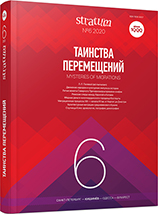Керамические маркеры миграций в Крыму последней трети XIII — XIV вв. (по материалам местного гончарства)
Ceramic Markers of Migration in Crimea in the Last Third of the 13th — 14th Centuries (based on a local pottery manufacturing)
Author(s): Iryna B. TeslenkoSubject(s): History, Cultural history, Middle Ages, 13th to 14th Centuries, Migration Studies
Published by: Издательский дом Stratum, Университет «Высшая антропологическая школа»
Keywords: Crimea; 13th—14th centuries; ceramic manufacturing; glazed ceramics; migrations; Anatolia; Seljuks; Byzantium; Transcaucasia;Khorezm;
Summary/Abstract: The glazed ceramics manufacturing in Crimea in the last third of the 13th and 14th centuries is one of the handicraft industries to reflect most clearly the complex of ethno-political and demographic processes of those times. Even the coming of this technology to the Crimea was largely due to the different new immigrants who traditionally used it. Therefore, the Crimean glazed pottery had Anatolian, Iranian-Caucasian, Central Asian, Byzantine-Balkan, and East Mediterranean features, which appeared variably in the local ceramic wares at the beginning of activity of the workshops. So the goal of the study is to analyze the complexes of innovations that were introduced and to specify their possible origin and the ways of ingression. Particular attention is paid to options that could be directly related to potters migrations. The results of physicochemical studies of ceramics are employed in addition to ethnoarchaeological, formal-typological, and comparative methods of analysis. This approach allows us to confidently distinguish between local products and imports sometimes very similar visually.
Journal: Stratum plus. Археология и культурная антропология
- Issue Year: 2020
- Issue No: 6
- Page Range: 153-176
- Page Count: 24
- Language: Russian
- Content File-PDF

